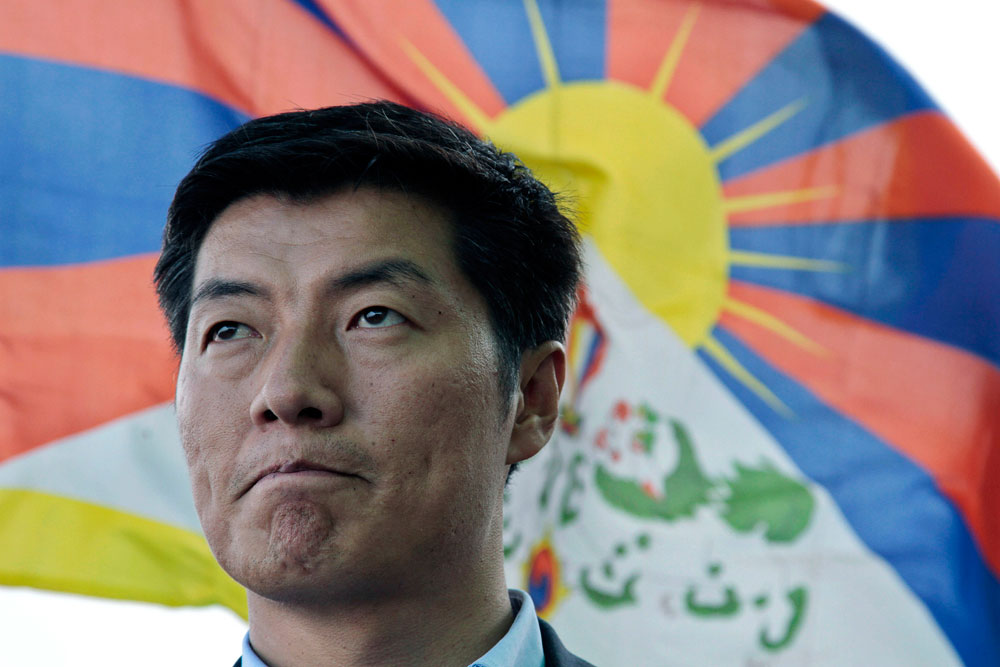
Dr Lobsang Sangay, a former senior fellow at Harvard Law School, is the Kalon Tripa (chief political leader) of the Central Tibetan Administration.
Tibet’s political future lies in ‘Middle Way’
By Lobsang Sangay
August 2011 was a notable month for democracy for the peoples of Thailand and Tibet. On August 5, Thailand voted in its first female prime minister, Yingluck Shinawatra. On August 8 last year, I was inaugurated as the first Tibetan political leader to be democratically elected and took over the leadership under a new governing system in which the Dalai Lama ceased to have political authority.
Although Tibet and Thailand share Buddhist culture, our traditional political cultures have been different. Whereas in Thailand the king was the temporal ruler, in Tibet for around 400 years the Dalai Lama was the temporal, as well as spiritual, leader.
In 2011, despite impassioned appeals by many Tibetans, His Holiness the Dalai Lama officially relinquished his political power, to remain only the spiritual leader of the Tibetan people.
His Holiness voluntarily gave up his power to dismiss the Tibetan parliament, judiciary and executive; to sign or veto bills; and to summon emergency meetings. This change surprised many, but in fact His Holiness has been quietly moving the traditional Tibetan governing system towards democracy for many decades.
The democratically elected “Kalon Tripa” (the office I currently hold) is now the political leader of the Central Tibetan Administration – the India-based governing administration of Tibetans-in-exile.As Tibetans mark the anniversary of the democratic transition, we also reflect on a year marked by anguish and tragedy due to a wave of self-immolations by Tibetans in Tibet protesting against Chinese government policies. This form of protest was rarely seen in the past. Since last year, the scale has become shocking. The first immolation in recent times took place in 2009 when a young monk, Tapey, set himself on fire at a marketplace near Kirti Monastery (Sichuan) in eastern Tibet.
But these incidents were just the beginning. Since August 2011, 43 Tibetans have set themselves on fire while shouting slogans for the return of His Holiness the Dalai Lama to Tibet and crying of freedom for Tibetans. Most were young and included monks, nuns, nomads and students. The majority have died.
These self-immolations have continued despite the fact that His Holiness the Dalai Lama has always emphasized the sanctity of human life, and despite repeated appeals by the Central Tibetan Administration to refrain from such drastic actions.
Self-immolation may seem incomprehensible, but such acts must be viewed in its context.
Most of the self-immolators were current or former monks and nuns. It is impossible not to see repressive Chinese government policies as the root of their despair. “Management Committees”, dominated by Chinese cadres, have been rigorously instituted in all monasteries. These committees dictate what monks and nuns should do, how they should pray, and who should be allowed into monasteries. All monasteries must display pictures of Mao Zedong and China’s current president, Hu Jintao, and fly the Chinese flag.
In numerous monasteries, forced patriotic re-education campaigns are underway. Monks or nuns refusing to cooperate with Chinese policies are evicted from monasteries or arrested. According to the abbot of Kirti Monastery, the government not only installed surveillance cameras but deployed as many as 800 security officials inside monastery in 2011.
Under the “Strike Hard” campaign monks and nuns are forced to denounce the Dalai Lama and to stamp on his photo, which is banned all over Tibet.
But it is not only the religious community that face injustice. Far from the promised “socialist paradise”, Tibetans suffer under political oppression, social marginalization, and cultural assimilation, while the so-called “development” policies have seriously degraded the Tibetan environment.
In such conditions, hopelessness can set in among religious and lay Tibetans, especially when they feel that their suffering is not being noted, let alone addressed. Self-immolation is a way of making their voices heard.
On becoming Kalon Tripa I committed to the “Middle-Way” policy initiated by His Holiness the Dalai Lama. This policy does not seek independence – an enormous concession for Tibetans who believe Tibet was always independent prior to 1951 – but genuine autonomy for Tibet within the People’s Republic of China. Under the Middle Way, China would be responsible for defense and Tibet’s foreign affairs, but Tibetan people would manage other affairs pertaining to Tibet, such as religion and culture, education, economy, health and environment protection. US President Barack Obama and the European Union among many other voices in the international community have expressed support for the Middle Way concept.
The Middle Way policy does not seek to “split the motherland”, and it does not undermine the dignity of China and the Chinese people. Indeed, I believe accepting the validity of the policy would greatly raise China’s moral standing in the eyes of many.
People who feel respected and in control of their destiny do not set themselves on fire in acts of protest.
Dr Lobsang Sangay, a former senior fellow at Harvard Law School, is the Kalon Tripa (chief political leader) of the Central Tibetan Administration. http://www.atimes.com/atimes/China/NH11Ad01.html